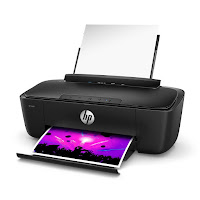 The printer is a device attached to a computer that is considered as a tool for extracting electronic
The printer is a device attached to a computer that is considered as a tool for extracting electronic data stored on the computer or some other device, and the only way up to now is to create a paper copy of it, whether this data is text or images, and from here the user must always strive for Improve his printer performance and secure it in the best way.
The most common types of printers
- 3D printer.
- AIO (All-in-One) Printer.
- Dot matrix printer.
- Inkjet printer.
- Laser printer.
- LED printer.
- Multifunctional printer.
- Plotter printer.
- Thermal printer
How to improve printer performance
Printers usually come with default settings that carry medium quality options in order to save on paper, ink, etc., so it is possible for first-time users of these printers to find results of poor quality in terms of the accuracy of printing documents and photos, but this does not pose any problem, it is possible to change these Easily settings to get the desired accuracy.
- Improve printer quality:
- Adjust the quality of the printer.
- Clean the printer parts and remove dust in the open places.
- Handle the ink carefully.
- Protect the printer from exposure to heat or moisture.
- Improve printer resolution:
- Type devices in the main search bar at the bottom of the screen.
- Choose Devices and Printers from the set of results shown.
- Clicking on the required printer icon with the right mouse button.
- Click on the Printing Perferences option.
- Change printer settings and click OK.
- Improve printer speed:
- Checking the connection: There is no doubt that wireless printers are a great option for easier and more productive work, but being wireless means that they depend on the speed and quality of the network, so it is necessary to verify this network and connect to it first of all.
- Reducing print quality: Printing with high quality will undoubtedly require more time. If printed documents do not require high quality, it is useful to use less quality to get more speed at work.
- Increased RAM: RAM plays an important role in improving printer performance and speed, and thus the performance of most modern printers can be improved by increasing this RAM.
- Reducing the number of pages: This is done by increasing the content of a single page, which allows to reduce the total number of pages and thus increase the speed of the printer. To accomplish this, you can benefit from reducing font size and margin size, but you should consider keeping the content clear without distorting it.
- Canceling buffering: It is a waiting period combined with the work of the printer to obtain any additional information while the printer is doing its work, which results in wasting more time. This can be bypassed by going to the printer options and then placing a tick next to the option to print directly to the printer.
- Or those that are pending are still taking up memory in the printer, which slows down their work, so it is useful to enter the print queue to see the possibility of the presence of some old commands and delete those that are no longer needed which in turn will make the printer work faster.
How to protect the printer
- Using data encryption: Hackers may access the information in documents when they are sent to the printer, so a good encryption system that converts those tasks into complex codes will be very necessary, and it is also useful to encode hard drives in the printer as they contain the set of tasks You are working on and information related to those documents which will make it more difficult to access that data.
- Setting up the licensing system: Modern companies work to protect their data from harmful files that can be sent by some people who access the printer jobs and their queue, which requires them to put in secure transfer systems, as these licensing systems attach all the tasks The printer with information that includes its name, time and device, which increases the responsibility of employees and makes them work more efficiently for fear of accountability.
- Changing a user's password when setting up the printer: All printers come with default passwords that are easily accessible to hackers, so not changing these words is undoubtedly an unsuccessful option, as changing them is very necessary in order to protect and secure the printer.
- Keep all printers up to date: Hackers and servers essentially exploit those vulnerabilities caused by outdated security measures, which increases the possibility of data breaches, so updating printers periodically is one of the actions that should not be neglected.

Post a Comment